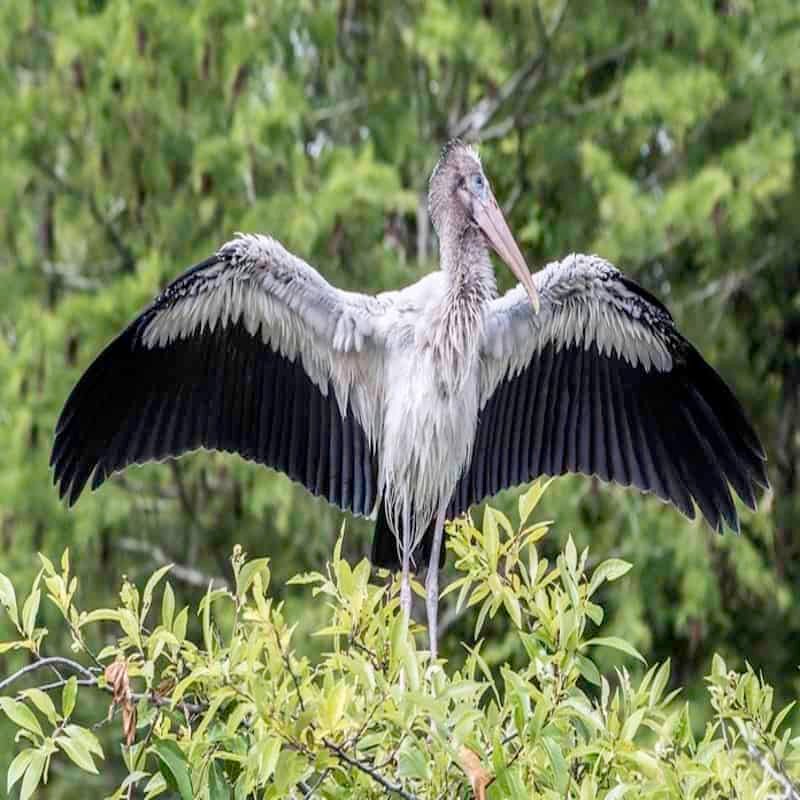Mycteria americana is a big American wading bird and commonly known as the Wood stork. It was named the “wood ibis” before it was an ibis. The Americas, especially the Caribbean, have subtropical and tropical environments. It is native to South America but may disseminate as far north as Florida. This stork developed in tropical areas, according to Linnaeus’ 1758 description. Habitat: The wood stork prefers a tropical or subtropical environment with variable water levels. The one-meter-diameter (3.3-foot) nest is found in mangroves and Taxodium trees, frequently near or above water. The wood stork colonies. The nest is built of sticks and moss.
Quick Overview: Mycteria Americana – Wood Stork
Body size: Around 35-45 in (89-114 cm) and a weight of 2721 g (96 oz)
Main colors: White, Black, Yellow, Gray
Range: Coastal area of United States
Migratory Bird: Yes
Best time of the year to see in the U.S.: All Year (January – December)
Conservation Status: Least Concern
Wood Stork Description
Adults are around a meter long with a 1.5-meter wingspan. Their beak is black, and their head and neck are scaly, featherless, and stand out straight when flying. The main, secondary, and tail feathers are black. Their body is white. Their beak is pale yellow, while their head and neck are dull grays.

Size
These birds have a length of 35-45 in (89-114 cm) and a weight of 2721 g (96 oz). Their wings could range 65 in (165 cm).
Feeding
Insects, insects, and aquatic creatures are eaten by adults. A 2.5 kg bird would consume almost half a kilogram of fish every day. These birds scan shallow water for activity and snap their beak shut when they find a fish. The stork’s bill-snapping response is one of the quickest known in vertebrates, requiring just around 25 thousandths of a second.
Habitat
It is found in tidal seas, mangroves, and swampy areas. They hunt in muddy banks or marshes. Their nests are built in trees near water to protect the eggs from predators.
Behavior
Storks, like their near cousins, Cathartidae vultures, are flying birds that ride thermals to feeding areas up to 130 kilometers distant. When descending, they are renowned to make amazing spins, dives, and rolls. They live in vast colonies with other storks and build their nests in enormous flocks.
Mycteria americana Scientific Classification
- Kingdom: Animalia
- Phylum: Chordata
- Subphylum: Chelicerata
- Class: Aves
- Order: Ciconiiformes
- Family: Ciconiidae
- Genus: Mycteria
- Species: Mycteria americana
Best time of the year to see
In the United States, the best time of year to see these birds is all year round, regardless of the season. This refers to any month of the year between January and December.
Distribution of the Wood Stork in the USA
Breeds in Florida and Georgia; it is possible that it will breed elsewhere along the coast from South Carolina to Texas on a very rare occasion. He has traveled as far as California, and Massachusetts, albeit only on rare occasions. The species is found along the coast of Mexico and in the West Indies.

